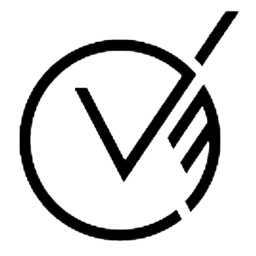In the realm of social media, B2B companies have embarked on a quest to uncover their ideal position, setting them apart from their B2C counterparts. While B2C effortlessly leverages multiple social platforms to engage consumers and drive revenue, B2Bs have grappled with finding their elusive app that works best for them. Research has illuminated this journey, identifying a select group of businesses that are beginning to thrive in B2B success.
These pioneering companies have transitioned from mundane social media updates and event notifications to crafting sophisticated, engaging content designed to captivate their audiences and steer them toward achieving tangible business goals. In tandem with this shift, these innovators have made substantial investments in agencies and in-house resources, dedicating them to various roles within their social media realms. Thanks to these strategic investments, best-in-class companies have evolved their program planning, moving from a weekly grind to a more strategic quarterly approach.
However, it is important to recognize that this level of commitment remains the exception rather than the norm. Many organizations still find themselves entrenched in a week-to-week planning cycle, often guided by the question, “What content do we have on hand to post?”
B2B Content Strategy Focus Areas
Research has revealed that the best organizations direct the majority of their efforts into four pivotal content “buckets,” each catering to distinct audiences:
- Product/Solution: These companies showcase their products through high-definition images, videos, and informative content, spotlighting successful implementations, and customer testimonials—all aimed at enticing prospective buyers.
- Recruiting/HR: Information and imagery are devoted to culture, career opportunities, training, diversity, and more, targeting both recruitment efforts and the engagement of existing employees.
- Brand: Content and branding efforts revolve around conveying and enhancing brand pillars such as innovation, inclusion, efficiency, and reliability, among others.
- Community: Posts are centered on topics that resonate with the company’s values, including events like Earth Day, Bring Your Child to Work Day, MLK Day, volunteer initiatives, and more.
Amazon Web Services (AWS), notably, has become a content powerhouse by churning out daily podcasts through LinkedIn, streaming content to their impressive 8.5 million followers, and strategically redistributing it across various platforms. The quality of content production has witnessed a significant upswing, with most of these successful companies, employing short, highly stylized videos to engage their followers.
Exploring the Preferred Social Media Platforms for B2B
When it comes to social media channels, it’s no surprise that LinkedIn reigns supreme as the dominant player for B2B companies. Twitter, now known as X, has witnessed a decline in its business audience and the interest of B2B entities. Instagram has emerged as one of the top four essential platforms for B2B, standing alongside YouTube, LinkedIn, and Facebook (the latter two to a lesser extent).
For instance, McKinsey has harnessed Instagram as a significant channel for disseminating thought leadership, offering educational posts that often link to studies and research. Meanwhile, Novartis, the pharmaceutical giant, adopts a batch approach for content sharing, employing thematic “campaigns” characterized by consistent style, tone, and topic. This allows them to create content in bulk and strategically schedule its release.
While TikTok is gradually gaining a B2B audience, its applicability remains specific to certain industries and companies. Threads, on the other hand, presents potential but grapples with building a substantial B2B following.
Navigating Abandoned Pages and Evolving User Behavior
Research has unveiled intriguing surprises. “Legacy” platforms like Facebook, where companies hastily established pages or groups years ago, now serve as vast graveyards of abandoned digital real estate. This has created opportunities for opportunistic individuals and entities to create fake pages using company branding or suspicious posts via company pages.
Moreover, user behavior has undergone a transformation, posing challenges to maintaining brand consistency, especially on LinkedIn. In the past, visitors had an average of eight seconds to assess a website, but with the continuous scroll feature of social media, particularly in the case of Reels, this window has significantly narrowed.
Key Insights and Future Steps
Here’s what needs to be done for B2B organizations succeeding in this virtual world to regain their social media presence and take advantage of platforms from a more strategic and tailored approach.
- Review and Refine: Audit and tidy up legacy social media pages and groups to ensure a clean and consistent digital presence, as exemplified by our Facebook example.
- Plan Ahead: Shift from a week-to-week content approach to crafting a content schedule for one to two months in advance.
- Content Strategy: Define the sources of content within your organization, involving departments like HR, sales, product, and corporate responsibility.
- Engage Stakeholders: Discuss social media goals with relevant departments, secure their commitment, and elucidate the content capture, review, approval, and posting process.
Recognize that not every entity will embark on this journey with the same level of enthusiasm. Priorities may vary, with some placing a premium on activity over performance, while others set higher expectations for prospects and customers.
As B2B social media platforms continue to gain prominence, companies must refine their approaches to unearth the strategies that best align with their unique business objectives.

